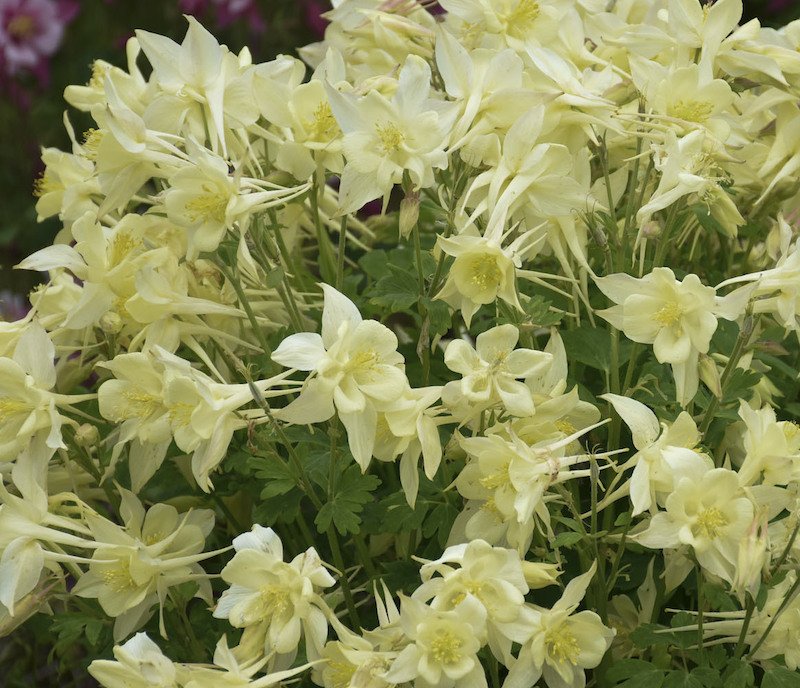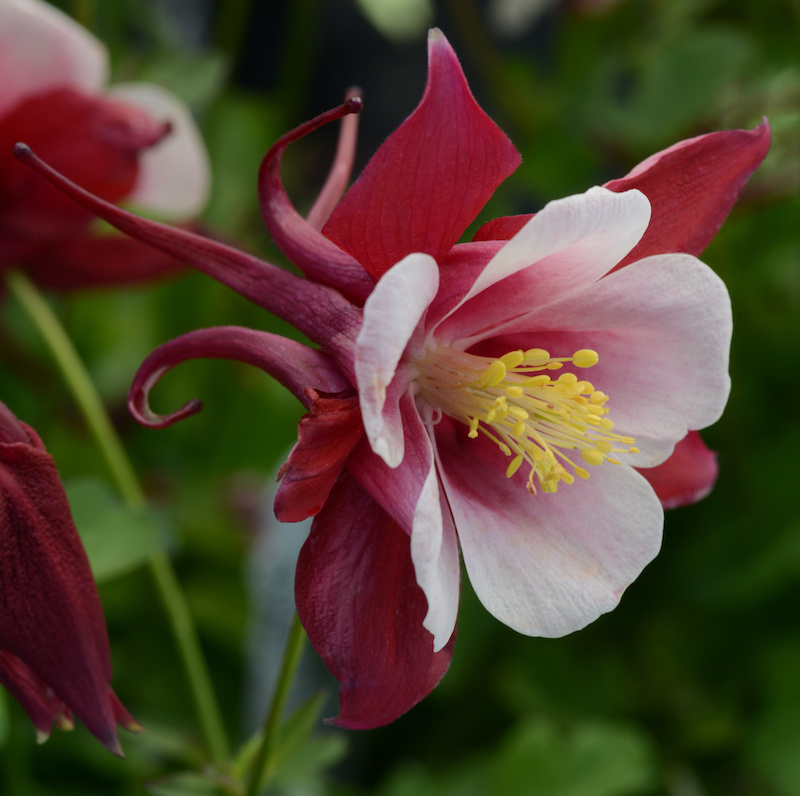Different plants need different amounts of supplemental fertilizing. Most trees and shrubs tend to need less feed than fruit, vegetables and annual flowers. Columbine are herbaceous perennials and rarely need much supplemental feeding when grown in the garden. Container-grown Columbine will need regular applications of a diluted liquid fertilizer, just as annuals and other pot grown plants do. Ornamental hybrid varieties of Columbine, Early bird and Winky series plants, will have better blooming and color when fertilized early in the spring with a slow-release feed that lasts all growing season.

How to Fertilize Columbine
Columbine thrives in a wide variety of soil types and pH levels, and is not a heavy feeder. Using a granular, slow-release fertilizer once in the spring will give plants the boost they need for vigorous growth all season. Monitor your plant for signs of malnutrition, including yellowing older leaves, reduced blooming, stunted foliage, or excess stem growth. Fertilizing too often at high concentrations can damage your plants and lead to weak stems. Excess fertilizers also are washed into waterways, storm drains and contaminate groundwater.
Best Time to Fertilize
The time of year and day can make a difference in how effective the fertilizer is. Columbines need their feeding delivered just as the new foliage emerges in the spring. This is when the plant is actively growing and is able to take up the most food. Later in the summer, as your Columbine prepares to go dormant and starts to die back, extra nutrients are not needed. On the other hand, mulching the plant with organic compost in the fall will help condition the soil and slowly add nutrients over time.
When applying granular fertilizer, make sure that none gets on the leaves. Leaf burn from fertilizer can be deadly if the plant is very young. Water in any granular fertilizer well to ensure that it reaches the root zone.

Best Fertilizer For Columbine
Columbine responds well to a well balanced, slow-release fertilizer that supports overall growth. Espoma Plant-Tone, Dr Earth, and Gardner and Bloom are good brands to try. They are well balanced and easy to use.
Columbine that is growing in a container will need much more frequent feeding throughout the growing season. A diluted liquid feed is easier to use for pots. Fish emulsion, Kelp, and Seaweed blends have good mixes of macro and micro nutrients essential for blooming and vigorous growth. Alaska brand, Neptune, and Fox Farms make well-balanced formulations that are easy on plants. Any fertilizing in pots should end by the beginning of August, so that plants can completely harden off before the fall.
Columbine Fertilizing Tips
- Only apply fertilizer if a soil test indicates the need or when plants begin to show signs of slowed growth, smaller than normal foliage, or reduced blooming
- Apply a slow-release, granular feed once early in the spring
- Fertilize early in the day and keep the food off foliage to prevent fertilizer burn
- Container-grown plants need to be fertilized with a diluted liquid feed
Warnings
-Always wear protective gloves and a face mask when handling chemical fertilizers
-Closely follow all directions and storage guidelines that are on the fertilizer label
 |
Author Robbin Small - Published 7-12-2022 |
